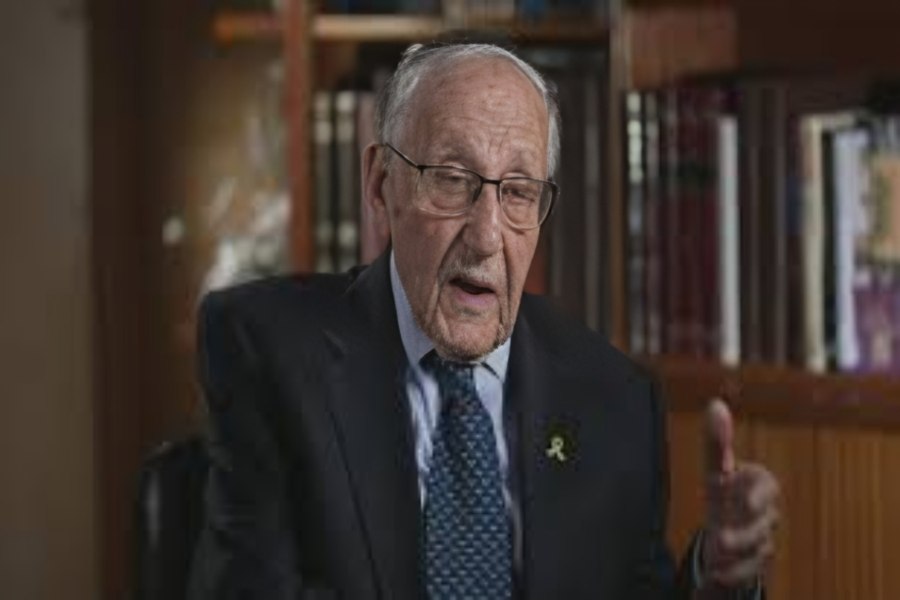As the end of World War II approached, one of the most tragic and lesser-known events unfolded off the coast of Lübeck Bay, Germany. On May 3, 1945, British Royal Air Force (RAF) planes mistakenly bombed the Cap Arcona, a German ocean liner packed with thousands of concentration camp prisoners. What was intended to be a rescue effort turned into a devastating tragedy, claiming the lives of over 7,000 people. Survivors, including Manfred Goldberg and George Schwab, share their harrowing memories of that fateful day and the events leading up to it.
Before the war, the Cap Arcona was a luxurious German cruise ship known for its transatlantic voyages, offering first-class amenities to wealthy passengers. However, in 1939, as the war began, the Nazis repurposed the vessel into a floating barracks. By 1945, as the Allied forces closed in on Nazi Germany, the ship was anchored off Lübeck Bay, where it became a grim part of SS Chief Heinrich Himmler’s plan to conceal evidence of the atrocities committed in concentration camps.
As Allied forces advanced, thousands of concentration camp prisoners, including Jews, political prisoners, and people from various nationalities, were evacuated and crammed onto the Cap Arcona. Historian Bill Niven explains, “The Nazis wanted to get rid of the evidence — the prisoners were the evidence.”
Manfred Goldberg, then just a young man, was among those forcibly taken from the Stutthof concentration camp in Poland. He and his mother were loaded onto overcrowded barges, where conditions were described as “hell on Earth.” Prisoners were given little food and no sanitation, and many died before even reaching Lübeck Bay. “You could hardly sit, you certainly could not sleep,” recalls Schwab, who also endured the perilous journey.
When they finally arrived, the prisoners were forced onto the Cap Arcona, a vessel designed to hold only 1,500 passengers but now crammed with over 4,000 people. The ship’s engines were barely functional, and food and water were scarce.
On May 3, British Typhoon aircraft attacked the Cap Arcona, mistakenly believing it was carrying fleeing Nazi officials. The RAF had been informed that some German ships in the Baltic might attempt to escape to Norway, prolonging the war. Tragically, due to miscommunication, the intelligence that prisoners were on board never reached the pilots. What was intended as a strike against the remnants of the Nazi regime became a catastrophic case of friendly fire.
“The panic and horror on the ship were unimaginable, especially for those on the lower decks,” said Niven. With no way to escape, thousands of prisoners were trapped as the ship was engulfed in flames. Many who managed to jump into the frigid waters were shot by SS guards waiting on the shore, determined to leave no survivors.
Manfred Goldberg and George Schwab were at a nearby naval base when they saw the planes flying overhead. “We could hear the explosions, and we feared the worst,” said Goldberg. Schwab’s ordeal continued when he was rescued but had to witness the aftermath of the bombing — bodies floating in the water, and the half-sunken Cap Arcona listing in the bay. Of the 4,000 prisoners on board, only about 400 survived.
Among those who lived was Willi Neurath, a political prisoner who resisted the Nazi regime. Neurath’s son, Neurath-Wilson, shared that his father only survived because he couldn’t swim and stayed on the ship until rescuers arrived. Neurath’s wife, Eva, searched the shoreline, desperate to find her husband. They were eventually reunited, a moment Neurath-Wilson now shares to keep their story alive.
The sinking of the Cap Arcona remains one of the deadliest maritime disasters in history, surpassing even the Titanic. However, for decades, the story was little known outside of Europe. Today, survivors and their families continue to honor the memory of those who perished. Each year on May 3, families sail to the site where the Cap Arcona was bombed, ensuring that the world does not forget this tragic chapter of history.
